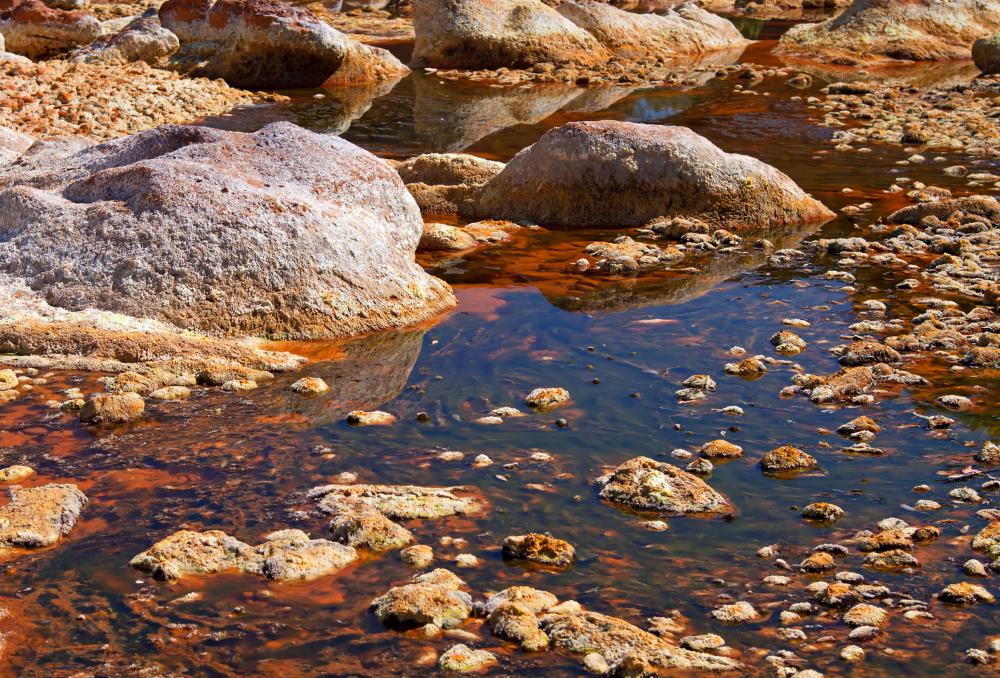At InfoBloom, we're committed to delivering accurate, trustworthy information. Our expert-authored content is rigorously fact-checked and sourced from credible authorities. Discover how we uphold the highest standards in providing you with reliable knowledge.
What Is Chemical Weathering?
Chemical weathering is a process that occurs when water, air, or acids result in chemical changes to the minerals within rocks. These changes cause the rocks to dissolve or change into new elements. Unlike mechanical weathering, chemical weathering can change the makeup of the weathered rocks. Solution, oxidation, hydration, carbonation, and hydrolysis are all examples of this type of weathering.
Solution occurs when a solvent like water breaks down and dissolves rock. Water can have multiple chemical weathering effects on rocks. When the minerals within the rock absorb water and expand, the structure of the rock becomes unstable. This effect is known as hydration.

While most minerals are not soluble in pure water, many will quickly weather when even small amounts of acid are present. Water is naturally made acidic by combining with carbon dioxide. Carbon dioxide occurs in small amounts in the earth's atmosphere, which can cause acidity in rain. The respiration of animals and decaying organic matter can add carbon dioxide to the soil, causing ground water to become slightly acidic. Carbonation occurs when carbon dioxide reacts with the minerals in the rocks to dissolve or weaken them.

Oxidation occurs when oxygen in the air combines with minerals within a rock to form new chemical compounds. Rust is an example of oxidation. Oxygen is abundant in the atmosphere, but oxidation occurs slowly unless water is present. Oxygen dissolved in water causes most oxidation weathering.
Hydrolysis takes place when the minerals within a rock have a chemical reaction to the hydrogen found in rainwater. This causes new compounds to form, weakening the structure of the rock. When granite undergoes hydrolysis, for example, the feldspar contained within the rock turns into clay-like material, weakening the rock.
When hydrolysis occurs, the rock is affected from the outside in. Many factors effect the rate of chemical weathering on a rock’s surface. If the rock contains cracks or fractures, the weathering will worsen these faults. The chemical makeup of the parent material also affects the rate of weathering. Some minerals are more vulnerable to such forms of weathering; for example, the rock known as basalt weathers quickly due to the chemically unstable minerals it contains.
Chemical weathering is more prevalent in tropical environments than in arctic or arid environments. High amounts of rainfall, warmer temperatures, and low evaporation rates create an atmosphere that encourages chemical weathering. Particles with a larger surface area are more at risk of chemical weathering than smaller surface area particles. Since chemical weathering affects the surface of a stone, the larger the surface area of the stone, the greater the effect the weathering can have. Organisms such as fungi or algae that may grow on rocks can encourage a rapid increase in weathering compared to rocks unaffected by these organisms.
AS FEATURED ON:
AS FEATURED ON:












Discuss this Article
Post your comments